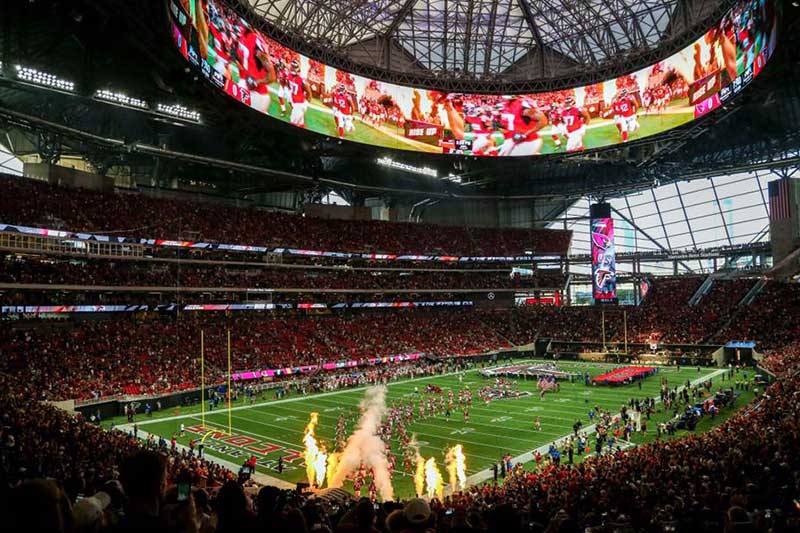
In recent years, LED lighting has transformed sports arenas globally, enhancing the player experience and reducing energy costs significantly. From basketball courts to football stadiums, sports facilities are turning to LED lighting to improve visibility, energy efficiency, and overall performance while cutting down on maintenance expenses.
The Mercedes-Benz Stadium in Atlanta, home to the NFL’s Atlanta Falcons and Major League Soccer’s Atlanta United, is a prime example of a sports arena benefiting from LED technology. The stadium utilizes a state-of-the-art LED lighting system designed by Musco Lighting, which delivers energy savings of nearly 60% compared to traditional lighting. This upgrade has significantly reduced the stadium’s energy bills while enhancing the in-stadium and broadcast experience for fans and players alike.
With LEDs, Mercedes-Benz Stadium can adjust the brightness and color of the lights instantly, creating dynamic light shows for special events. The stadium’s lighting system even supports high-quality slow-motion replays, a feature that was challenging with older lighting technologies due to flickering.
LED lighting systems are also eco-friendly, as they reduce carbon emissions and the need for frequent replacements. For sports arenas like Mercedes-Benz Stadium, this aligns with sustainability goals and reduces the environmental footprint, making LED lighting a win-win solution.
The adoption of LED lighting in sports arenas offers substantial benefits, from energy savings and maintenance reduction to enhanced visibility and experience for players and fans alike. With successful implementations like the Mercedes-Benz Stadium, LED lighting is rapidly becoming a standard across sports venues worldwide, setting new benchmarks for energy efficiency and sports entertainment quality.